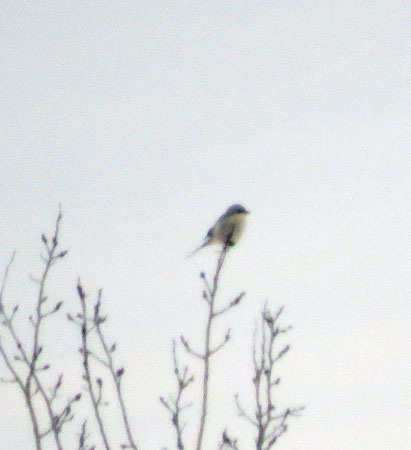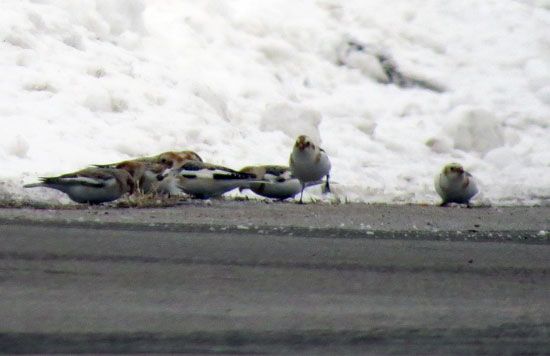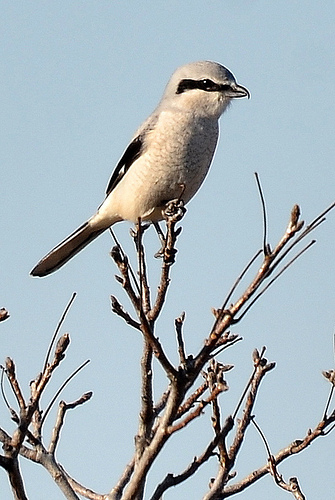This is my fourth year of birding and for the last two of them, I’ve been whining about not finding a Northern Shrike. I’ve sort of whined in posts here and here. A couple of days ago, I saw Chip and Larry, young friends of mine from the North Branch Nature Center, and I began again. I noted to Larry that he was on my bad guy list because he keeps seeing shrikes and I never do. He replied, “Dick, I hate to tell you. I just saw one on my way to work” and went on to tell me where — up near my eye doctor’s office.
Fast forward a couple of days. Yesterday, I had to take Mary up to the hospital for an appointment and had some time to kill so off the dog and I went in the truck to bird. I headed right up to the spot Larry had mentioned, figuring it was another wild shrike chase. I scanned the tree line way off as I drove in and saw a dot way off. As I parked and got the glasses on it, aha! Definitely a Northern Shrike perched at the top of a big birch tree, over a quarter mile off. I watched a bit, took some long-range photos from the truck, and then got out to get my scope. As I set up the rig, I noted that the bird was gone. I doubt with all the coming and going in the parking lot I spooked it but it was a find — life bird number 355. Here is a lousy image that I got from far away:
After packing up and warming up frozen hands, I turned the truck around and up ahead, a small flock of birds flew right in front of me. I turned into another lot, noting that they were snow buntings. They kept moving away from me as I tried to photograph them through the open window – and of course, I was blocking someone coming in for an appointment. I got better positioned as they settled along the driveway edge and was able to grab a couple of shots before a car came along and flushed them for good — off they went sailing across the snowy fields with a 20 knot tailwind. They were a County first for me and County Big Year bird 19. About then, Mary called to say that she was getting fitted for a new support boot for her broken toe and would be ready soon. I think I had more fun than she but we both had successful afternoons.



